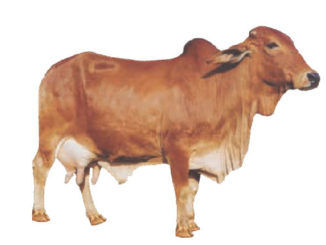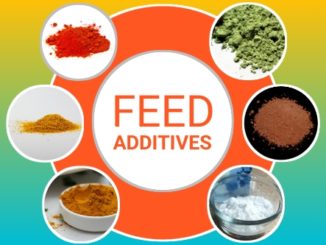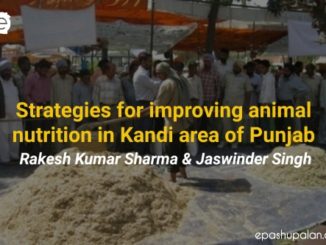Introduction
The crop livestock system is one of the most important characteristics of Indian agrarian economy and livestock sector is the integral part of India’s agriculture sector. During the last decade, the annual growth rate of livestock production has maintained a steady growth of 4.8 to 6.6% with a compounded growth rate of more than 5.0%. In contrast, the crop production remained either stagnant or increased marginally. Therefore, the livestock sector has emerged as one of the key components of agricultural growth in India. Stress is a reflex reaction of animals in harsh environments and causes unfavourable consequences ranges from discomfort to death. Variation in temperature is the major factor for threats on lactating cows due to heat stress in tropical and temperate region. Heat stress (HS) damages the global dairy industry by reducing milk yields and quality, harming health, and damaging the reproduction of dairy cows, causing huge economic losses each year.
Lactating dairy cows under heat stress (HS) experience limited energy intake, because they cannot meet their bodies’ demands to produce milk and maintain health, resulting in reduced milk yield and quality and leaving the dairy cows susceptible to diseases. As a result, large economic losses occur in the dairy industry in many countries, that in the tropical region. Heat stress induced metabolomics disturbances are directly responsible for these losses. This is particularly important given the trends of increased milk productivity using modern molecular genetic technologies accompanied by the temperature increases arising from global climate change. An accurate determination of when cows enter HS is complicated because the responses to HS affect not only the energy balance but also water, sodium, potassium and chlorine metabolism. Although the temperature and humidity index (THI) takes the most common indicator for heat stress, using the THI value of 72 as the threshold of HS onset, it allows only judgments based on the air temperature and humidity, is not an accurate measure of the metabolic alterations in dairy cows under heat stress, and does not account for cow-specific effects (age and breed), and other environment factors. Indeed, the heat stress induced physiological changes in dairy cows are depend on many factors. The heat stress can be controlled by many methods by altering environmental condition and nutritional aspects, thereby enabling the implementation of timely interventions to protect dairy cows from diseases, such as ketosis.
Heat stress
Heat stress for the dairy cow can be understood to indicate all high temperature-related forces that induce adjustments occurring from the sub-cellular to the whole animal level to help the cow avoid physiological dysfunction and for it to better fit its environment.
When environmental temperatures move out of the thermoneutral zone (or comfort zone) dairy cattle begin to experience either heat stress. Stress requires the cow to increase the amount of energy used to maintain the body temperature and there is less energy available to produce milk. Thermoneutral zone is the range of environmental temperatures where normal body temperature is maintained and heat production is at the basal level. The ranges of thermoneutral zone are from lower critical temperature (LCT) to upper critical temperature (UCT). LCT is the environmental temperature at which an animal needs to increase metabolic heat production to maintain body temperature. UCT is the environmental temperature at which the animal increases heat production as a consequence of a rise in body temperature resulting for inadequate evaporative heat loss. Thermoneutral zone depends on the age, breed, feed intake, diet composition, previous state of temperature acclimatization, production, housing and stall conditions, fat and skin insulation and external insulation, and the behaviour of the animal. UCT is given as 25-26 ºC, LCT as a range from -16 to -37 ºC for dairy cows.
Temperature-humidity index (THI) is mostly used as an indicator of thermal climatic conditions. THI is determined by equation from the relative humidity and the air temperature and is calculated for a particular day according to the following formula:
THI=0.72 (W+D) +40.6
Where W – wet bulb temperature ºC
and D – dry bulb temperature ºC
The principle of THI is that as the relative humidity at any temperature increases, it becomes progressively more difficult for the animal to cool itself. THI values of 70 or less are considered comfortable, 75 – 78 stressful, values greater than 78 cause extreme stress.
The severity of the heat stress can be assessed on as below:
| THI | STRESS LEVEL | PROBABLE EFFECTS |
| ˂72 | None | |
| 72-79 | Mild | Dairy cows will adjust by seeking shade, increasing respiration rate and dilation of the blood vessels. Minimum effect on milk production |
| 80-89 | Moderate | Both saliva production and respiration rate will increase. Feed intake may be depressed and water consumption will increase. There will be an increase in body temperature. Milk production and reproduction will be decreased. |
| 90-98 | Severe | Cows will become very uncomfortable due to high body temperature, panting and excessive salivation. Milk production and reproduction will be markedly decreased. |
| ˃98 | Danger | Potential cow deaths can occur. |
Symptoms of heat stress
The ideal temperature range for dairy cattle is between 25- and 65-degrees Fahrenheit. Once the temperature goes above 80 degrees Fahrenheit cattle reduce feed intake, which has a negative impact on production. At 90 degrees Fahrenheit or above, one can usually notice a dramatic decrease in milk production ranging from 3 to 20 percent. Humidity also plays a significant part in heat stress. There are three temperature-humidity ranges of concern. A temperature of 100 degrees Fahrenheit and 20 percent humidity is the range in which you begin serious measures to ease the stress on the cattle. Some type of cooling should be started. The danger occurs as the temperature nears 100 degrees Fahrenheit and 50 percent humidity. The lethal range for cattle is 100 degrees Fahrenheit and 80 percent humidity.
Because cattle sweat at only 10 percent of the human rate, they are more susceptible to heat stress. This is why dairy cattle need mechanical means to reduce heat, such as body sprinkling to aid in evaporation and effective air movement systems to aid in cooling. Stale, stagnant air can reach dangerous or lethal areas in a short time. Therefore, it is essential to have rapid movement of air in any confined area. During times of heat stress feed intake is reduce by 8 to 12 percent or more. This reduction in feed intake reduces volatile fatty acid production in the rumen, resulting in decreased production. The significant symptoms of heat stress are:
- Restlessness
- Crowding under shade or at water tanks
- Panting
- Increased salivation
- Increased respiration rate (gasping):
- Rates of gut and ruminal motility are reduced
- Lethargy
- Decreased activity
- Reduced feed intake
- Increased sweating
- Rise of rectal temperature (The effect of raise in rectal temperature is increased when the relative humidity is greater than 50%)
- Reduced heart rate
- Declined feed intake
- Increased water intake (Heat stress increases water consumption by at least five times the normal level)
- Drop in daily milk production
It is accepted that heat stress is the major cause of lost production in dairy cattle. Some authors suggested that milk production is reduced 15%, accompanied by a 35% decrease in the efficiency of energy utilization for productive purposes. Decrease in milk yield due to heat stress is more prominent in Holstein than in Jersey cattle. Reduction in milk yield is further intensified by decrease in feed consumption by the animals to compensate high environmental temperature. Actually 35% of reduced milk production is due to decreased feed intake while remaining 65% is attributable to direct effect of heat stress. Other factors resulting reduced milk production during heat stress are decreased nutrient absorption, effect in rumen function and hormonal status and increased maintenance requirement resulting reduced net energy supply for production
Management of heat stress
As the losses due to the heat stress is becoming a problematic situation in dairy sector, it is necessary that it should be efficiently managed. The heat stress can be efficiently managed by mean of physical protection and nutritional dietary manipulation.
Physical protection
Natural shade
Trees are an excellent natural source of shade on the pasture. Trees are not effective blockers of solar radiation but the evaporation of moisture from leaf surface cools the surrounding air.
Artificial shade
Solar radiation is a major factor in heat stress. Blocking its effects through the use of properly constructed shade structures alone increases milk production remarkably. Two options are available: permanent shade structures and portable shade structures.
Permanent shade structures
Orientation, floor space, height, ventilation, roof construction, feeding and water facilities, waste management system are taken into account in the designing of permanent structures, which is depend on climatic conditions prevailing. Natural air movement under the permanent shade structure is affected by height and width, the slope of the roof, the size of the ridge opening etc. Painting metal roofs white and adding insulation directly beneath the roof will reflect and insulate solar radiation and reduce thermal radiation on cows.
Portable or temporary shades
These can be moved from one place to a new area in the same grazing place. Portable shade cloth, as well as light roofing material, may be used on the temporary shades
Cooling by reducing ambient air temperature
Reduction of air temperature by means of air conditioning or refrigeration are of high expense, which is thus impractical. The evaporative cooling pad and a fan system which uses the energy of air to evaporate water is a more economically feasible method. Fine mist injection apparatus is a recent design of evaporative cooling systems which injects water under high pressure into a stream of air blown downward from above. High pressure foggers disperse a very fine droplet of water which quickly evaporates, cooling the surrounding air and raising the relative humidity. The typical design incorporates a ring of fogger nozzles attached to the exhaust side of the fan. Misters is another recent development in this in which a mist droplet that is larger than a fog droplet cools air.
Enhancing the cow’s natural mechanism of heat loss
Cooling in hot and humid climates emphasizes shade, wetting the skin, and moving air to enhance the cow’s major mechanism for the dissipation of heat – evaporative cooling from the skin. This is done by: Sprinkler and fan cooling systems – Sprinkling uses large water droplet size to wet the hair coat to the skin and Sprayers in parlour exit lanes – Exit lane sprayers are designed to automatically spray water onto the cows as they pass through.
Nutritional dietary manipulation
Evaporative heat loss through sweating and panting is the primary mechanism for heat loss at high environmental temperatures. Dietary electrolyte balance is especially important in locations where environmental temperatures exceed 24 ºC and is exacerbated if relative humidity exceeds 50%.Management of the dietary electrolyte balance is based on adding essential body salts and electrolytes to the drinking water and feed. It stabilises the dietary electrolyte balance, promotes homeostasis, assists the osmoregulation of body fluids, stimulates appetite, ensures normal skeletal development etc.
Conclusion
Heat stress is the main problem associated with the reduction in milk production. The ideal temperature range for dairy cattle is between 25 and 65 degrees Fahrenheit. Once the temperature deviates from this range the cattles get irritated which reduces feed intake, and thereby reduction in the milk production o lactating cows occurs. Stress requires the cow to increase the amount of energy used to maintain the body temperature and there is less energy available to produce milk. The ranges of thermoneutral zone are from lower critical temperature (LCT) to upper critical temperature (UCT). Between these ranges lactation is higher. The upper critical temperature (UCT) has no influence on the lactating cows. The climatic change occurring is the major reason for the development of the heat stress. Humidity also plays a significant part in heat stress. There are three temperature-humidity ranges of concern. A temperature of 100 degrees Fahrenheit and 20 percent humidity is the range in which you begin serious measures to ease the stress on the cattle. Some type of cooling should be started. The danger occurs as the temperature nears 100 degrees Fahrenheit and 50 percent humidity. The lethal range for cattle is 100 degrees Fahrenheit and 80 percent humidity. The depth of heat stress is given by temperature and humidity index (THI).THI of less than 72 is more favourable for the wellbeing of lactating cows. Even though this can’t be overcome completely, there are many ways for minimising the effect of heat stress, which can be by physical aspects or by nutritional aspects.
References
- Dash S., Chakravarty A. K., Singh A., Upadhyay A., Singh M. and Yousuf S. 2016. Effect of heat stress on reproductive performances of dairy cattles and buffaloes: A review, Veterinary world, 9(3): 235-244.
- Chavda M. R., Saavsani H. H., Dongre V. B. and Sonawane G. S. 2014. Impact of climate change on dairy cattle and its mitigation. The Indian cow issue – 40 (april – June).
- Das R., Sailo L., Verma N., Bharti P., Saikia J. and Imtiwati K. R. 2016. Impact of heat stress on health and performance of dairy animals: A review. Veterinary World. 9(3): 260-268.
- Chauhan D. S. 2014. Impact of climatic change on livestock production: A review, Journal of Animal Research. 4(2): 223p.
- West J. W. 2013. Effects of heat stress on production in dairy cattle, Journal of dairy science. 86(6): 2131-2144.
- Flamenbaum I, Ezra E, Effect of level of production and intensive cooling in summer on productive and reproductive performances of high yielding dairy cows. 2007. Journal of dairy science. 90(1): pp Abstract -345.






3 Trackbacks / Pingbacks